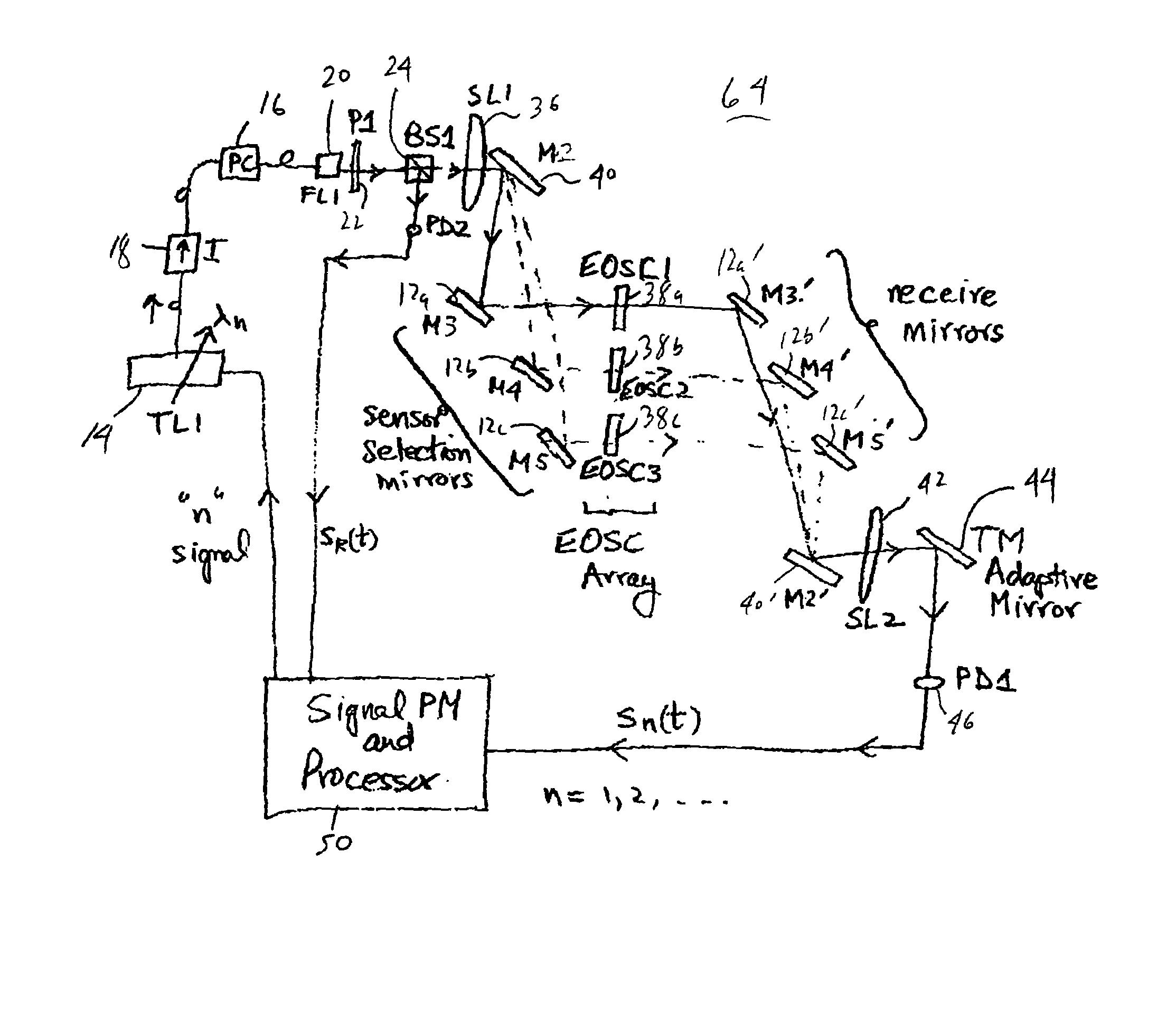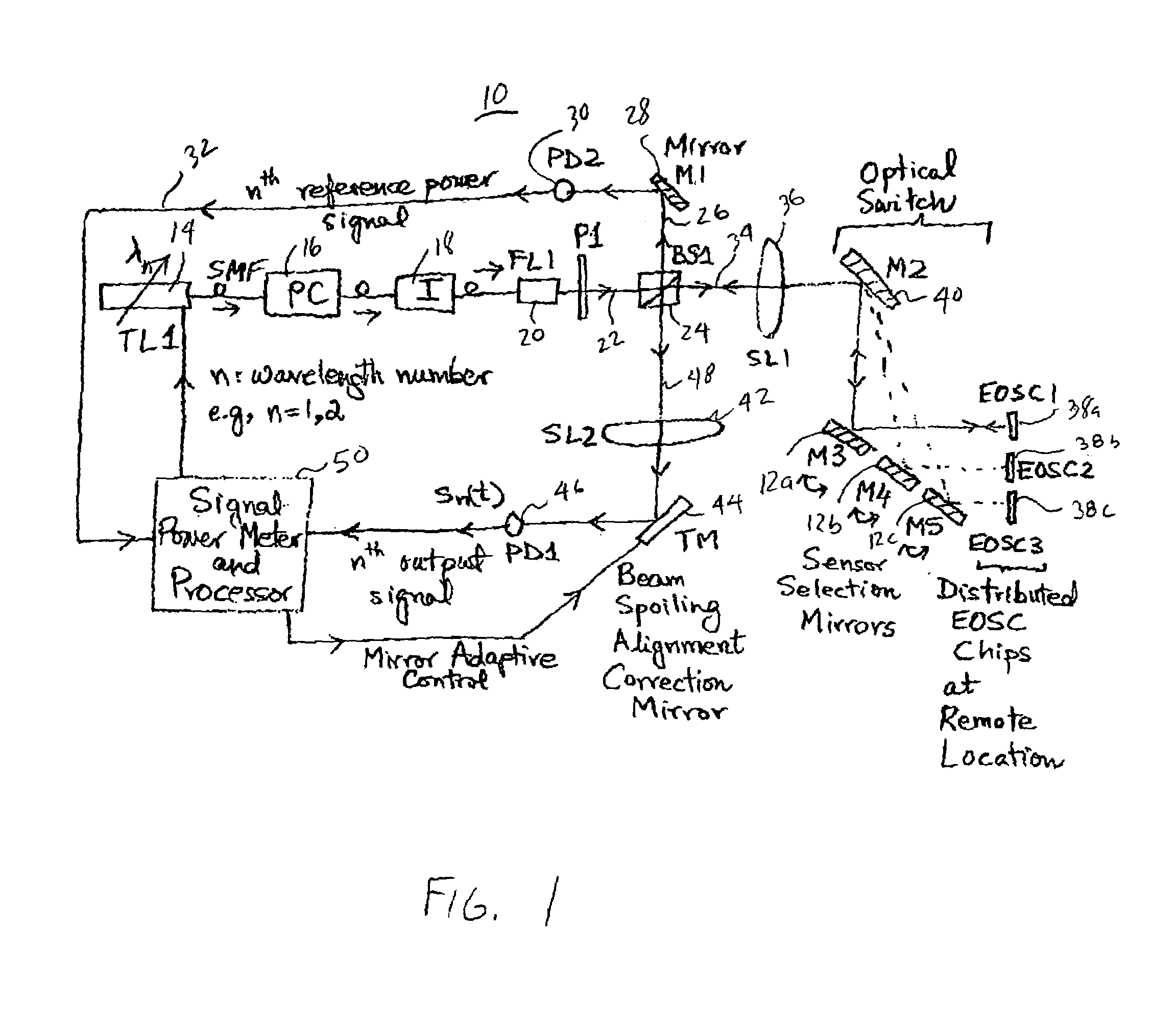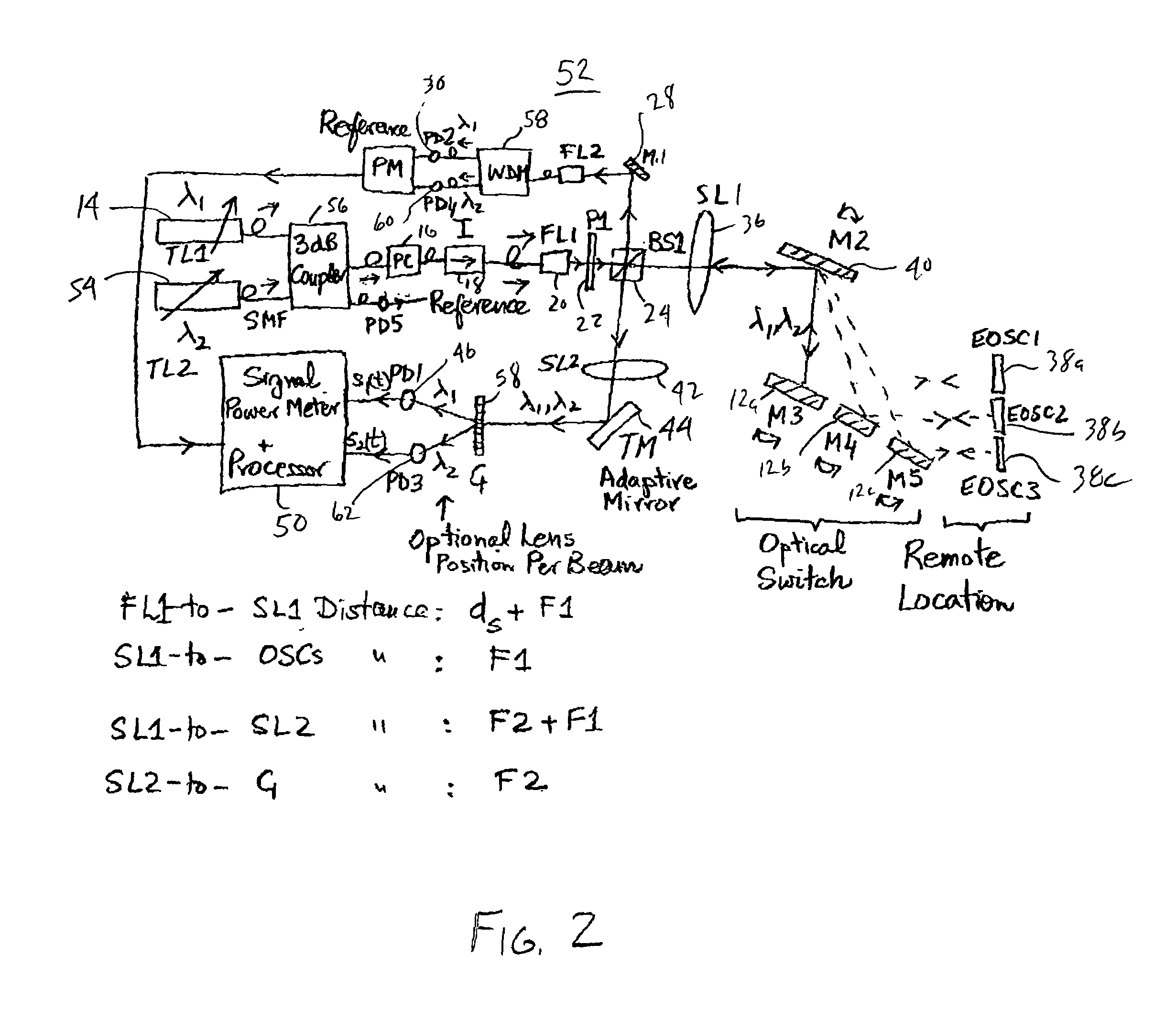High temperature, minimally invasive optical sensing modules
a technology of optical sensing modules and high temperature, applied in the field of optical sensors, can solve the problems of sensor malfunction, erroneous data, and low cost of low loss optics, and achieve the effects of low cost, low loss, and minimal invasiveness
- Summary
- Abstract
- Description
- Claims
- Application Information
AI Technical Summary
Benefits of technology
Problems solved by technology
Method used
Image
Examples
Embodiment Construction
[0025]FIG. 1 shows an embodiment of a high temperature minimally invasive optical sensor 10 using freespace interface optics. The sample frontend is composed for example of three Etalon Optical Sensor Chips (EOSCs) 12a, 12b, 12c using, for example, single crystal Silicon Carbide (SiC). Light from a tunable laser 14 passes via fiber-optics such as a polarization controller (PC) 16 and isolator (I) 18 to exit via a fiber lens (FL1) 20 to produce a freespace beam 22 with its minimum Gaussian beam waist radius wi located at a distance ds from FL1, this distance also called the half-self imaging distance (see Martin van Buren and N. A. Riza, “Foundations for low loss fiber gradient-index lens pair coupling with the self-imaging mechanism,” Applied Optics, LP, Vo.42, No.3, Jan. 20, 2003). This light then passes via a beam splitter BS124 to produce a reflected beam 26 that via mirror M128 enters a freespace coupled photodetector PD230 to produce a level electrical signal 32 indicating the ...
PUM
 Login to View More
Login to View More Abstract
Description
Claims
Application Information
 Login to View More
Login to View More - R&D
- Intellectual Property
- Life Sciences
- Materials
- Tech Scout
- Unparalleled Data Quality
- Higher Quality Content
- 60% Fewer Hallucinations
Browse by: Latest US Patents, China's latest patents, Technical Efficacy Thesaurus, Application Domain, Technology Topic, Popular Technical Reports.
© 2025 PatSnap. All rights reserved.Legal|Privacy policy|Modern Slavery Act Transparency Statement|Sitemap|About US| Contact US: help@patsnap.com



